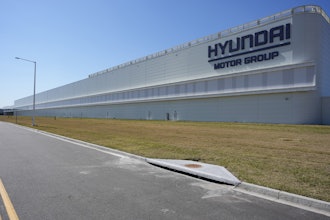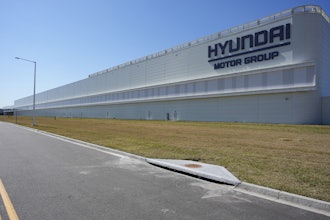By JOHN FREHSE, Chief Strategic Officer, Core Practice LLC
This is part two of a two-part piece. Part one can be found here.
Pay Ratio
This ratio represents the total hours an employer pays an employee over the course of a year divided by the hours the person actually works. This calculation incorporates costs, including vacations, holidays and other paid time off.
Once you have identified the average wage, fringe percentage and pay ratio, the three numbers should be multiplied together to get the fully loaded cost of one labor hour on straight time. For overtime, the numbers change. We assume full absorption of labor during the first 40 hours. Starting with the 41st hour, many of the costs go away because they are fixed and already covered in the first 40 hours.
These costs included the entire pay ration (vacations, holidays and other paid time off are not typically increased based on overtime), and some of the burden associated with the fringe benefits. Although health benefits are a fixed cost, taxes must always be paid on overtime, and some retirement benefits are often included as well.
Considering the vast difference between the non-value-added cost impact of idle time ($23.69) vs. overtime ($1.06), making the wrong decision to overstaff or underutilizing employees during the workday can be very expensive. Idle time is more than 22 times more expensive than overtime when measured on an adverse cost basis.
Here Is an Example of Some Typical Numbers
Average wage= $15.00 |
Cost of overtime: |
Overtime burden= 10% |
Adverse cost of straight time: |
Cost of straight time: |
Adverse cost of idle time: $23.69 |
|
Adverse cost of overtime: |
As you can see, neither decision has the lowest overall cost. The lowest cost solution represents the line where the plant is understaffed approximately 22 times more often than it is overstaffed, reflecting our difference in adverse costs. In this case, avoiding overtime generates $3,065,700 in additional labor costs. That alone should be a compelling argument to take a fresh look at strategic overtime usage.
It should also convince management teams that idle time should be the main target when looking at labor cost reduction opportunities. This facility was able to capture the cost savings, and the management team was able to educate its own executive team on the truth about overtime.
Do Not Be Fooled
The argument against excessive overtime is most logical when it relates to unnecessary overtime due to idle base hours — when your first 40 hours of work are not absorbed by productive activity. Unplanned maintenance downtime, material shortages and quality issues can trigger overtime. In these cases, where demand is not the driving factor, the lack of operational effectiveness is driving additional costs. This argument makes sense, and should not be confused with overstaffing to manage seasonal or variable-demand fluctuation. Overtime is an effective tool, assuming employees are effective during the first 40 hours paid.
So What Is the Overtime Lie?
The overtime lie is what we have all been told and assume to be true. “Overtime is more expensive. Keep overtime below 5 percent.” This is clearly bad advice when we examine the facts. The fear of overtime has forced management teams to overstaff and overstock. Warehouses must shoulder the cost of inflated inventory levels to handle last-minute spikes in volume.
The effective use of overtime can create large amounts of flexibility in a plant when done correctly. Inventory levels can be kept low, while not affecting customer service by creating a more on-demand environment. Overtime-savvy management teams can implement labor strategies that allow additional production to be completed on short notice.
The workforce can flex up to handle these spikes, and product can be made on demand and delivered just in time. This can allow for better customer service and lower inventory levels, giving your company the ability to compete more aggressively. Overtime can translate into lower prices and shorter lead times. Instead of overtime being a bad thing, it becomes an effective business tool that will help you achieve your goals.
How Much Is Too Much?
Health and safety factors limit the amount of overtime an employee can work. Once management teams grasp the reality of the cost, it is easy for them to become too aggressive with the use of overtime. Experts agree that, over an extended period of time, employees should limit the time they work each week to no more than 53 hours. Employee appetite for additional work hours may exist, but it is critical to balance employee preferences with healthy boundaries.
Tradeoffs
Companies with seasonal or variable demand often are not sure how high the “highs” will be or how low the “lows” will be. The caution is that management teams can run too lean and end up not being able to satisfy their peak requirements. Although they are in the low-cost position, if too aggressive, it can hurt customer service if orders can’t be met due to the orders’ magnitude.
Conversely, if management teams believe that high-demand spikes are going to occur and those spikes do not materialize, they can end up with a staffing level that is too high. Accurate forecasting is always extremely difficult, and management teams should proceed cautiously.
So What Does This Mean for You?
Companies that have been trying to minimize overtime, but are challenged with high levels of seasonal and/or variable demand can look forward to massive cost savings. Typical cost savings can range between 11 and 17 percent when coupled with proper change management strategies and the implementation of other operational best practices. Changing schedules is emotional and potentially disruptive. Management teams may only have one chance to get it right — so they need to do their homework.
By blending good business strategy with employee preferences, management teams can achieve a real win-win situation. Overtime is not the problem. In fact, if you have seasonal or variable demand, it is probably the solution.
What’s your take? Please feel free to leave a comment below! To read part one of this two-part series, please click here. For more information, please contact Frehse via 212.534.0539 or [email protected], or visit www.corepractice.com.


















